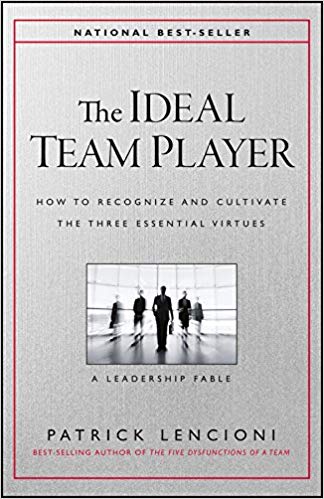The cost of leadership is self-interest. – Simon Sinek
In this space last week, I wrote about The 7 Things You Do as a Leader Your Team Can’t Stand. It was an attempt to pull back the curtain and look at the things that you do as a leader your people struggle with.
As promised, this week the script is flipped. It’s time to take a look at the things that people in the organization do that the leader can’t stand. It’s only fair considering the number of people who at one time or another have said they work for an idiot.
Keep in mind, the observations from this article including the one from last week are not designed to be used as ammunition to go after one another. It’s designed to put into context the necessity of a greater conversation that’s needed. Next week, I will devote this space to how both sides can come together, work through these issues, and be a stronger organization.
So what are the seven things you do that your leader can’t stand? Just like last week, this isn’t an exhaustive list but represents some of the more common ones.
- You are not a team player
This one thing will irritate your leader quicker than anything else. When the reality or the perception is that you do what you do more for the benefit of yourself than for the benefit of the team it will rub your leader the wrong way. You have little credibility when railing against your organization or leader when all of your actions demonstrate that you are using them for your own gain. Team players lift their leader, their peers, and thus, the entire organization. Click To Tweet
Your leader can’t stand your self-centeredness.
- You play politics
When you elect to engage in the office politics game it’s a demonstration that you have lost your focus and calls your motives into question. What your leader needs is not your skill at manipulating others but your ability to empower others. Your leader needs people on the team who are more concerned with reaching their goals and lifting those around them to do the same. Playing politics to get your way or get ahead is the lowest form of leadership.
Your leader can’t stand you stirring up dissension.
- You point out problems, provide no solutions
I’ve yet to find a perfect organization. Chances are, yours isn’t one of them. But if all you do is point out problems without providing solutions it can be a force of frustration for your leader. Henry Ford said it well, “Don’t find fault, find a remedy.” The next time you have a problem to take to your leader be sure to take a few solutions with you. Simply pointing out a problem means little if you are not willing to be a part of the solution. Click To Tweet
Your leader can’t stand you griping about things you’re not willing to fix.
- You don’t go above and beyond what’s required
The ability of your organization to move beyond the level of mediocrity rests with its people willing to go the extra mile to make it happen. But whenever people are not willing to embrace an above and beyond work ethic, it will be hard to rise above that level of mediocrity. So long as people are content to show up and do the minimum amount of work in order to get a paycheck, it will always be a struggle to move your organization forward. Click To Tweet
Your leader can’t stand people who only give minimal effort.
- You are not willing to take risks, you play it safe
This is not about taking reckless risks or behaviors that would otherwise put the organizations in jeopardy. But it does demonstrate that you are willing to think outside the box, that you are open to creative solutions, and that you take nothing for granted in terms of where the organization is and where it expects to go. Yet when you had rather play it safe and avoid risks’ then you are not moving the ball forward.
Your leader can’t stand small thinking.
- You stop growing and learning
No matter how good you are at doing what you do, there will always be room for improvement and something to learn. As John Maxwell said, “No matter how much it costs you to keep growing and learning, the cost of doing nothing is greater.” What signal does it send to your leader when you stop growing and learning? What do you think he or she thinks of your capacity to be a future leader in your organization if you are not growing and learning?
Your leader can’t stand your limited thinking.
- You don’t lead yourself well
In the final analysis, your ability to lead yourself is what matters. You must take responsibility for your personal growth and development. Before fixing everything around you, you must fix what’s wrong within you. So long as you are not leading yourself well you will never rise to a level of effectively leading those around you. Click To Tweet When you invest in your leadership you invest in your future. If your leader sees that you can’t lead yourself then what motivation does he or she have elevating you beyond where you are now?
Your leader can’t stand you not growing as a leader
Now that the 7 things have been named and brought to light on both sides, next week I will look at win-win solutions. It’s time for some conversations. I invite you to join in.
©2019 Doug Dickerson
Resources I recommend:
- The Ideal Team Player by Patrick Lencioni

- The Five Levels of Leadership by John Maxwell








